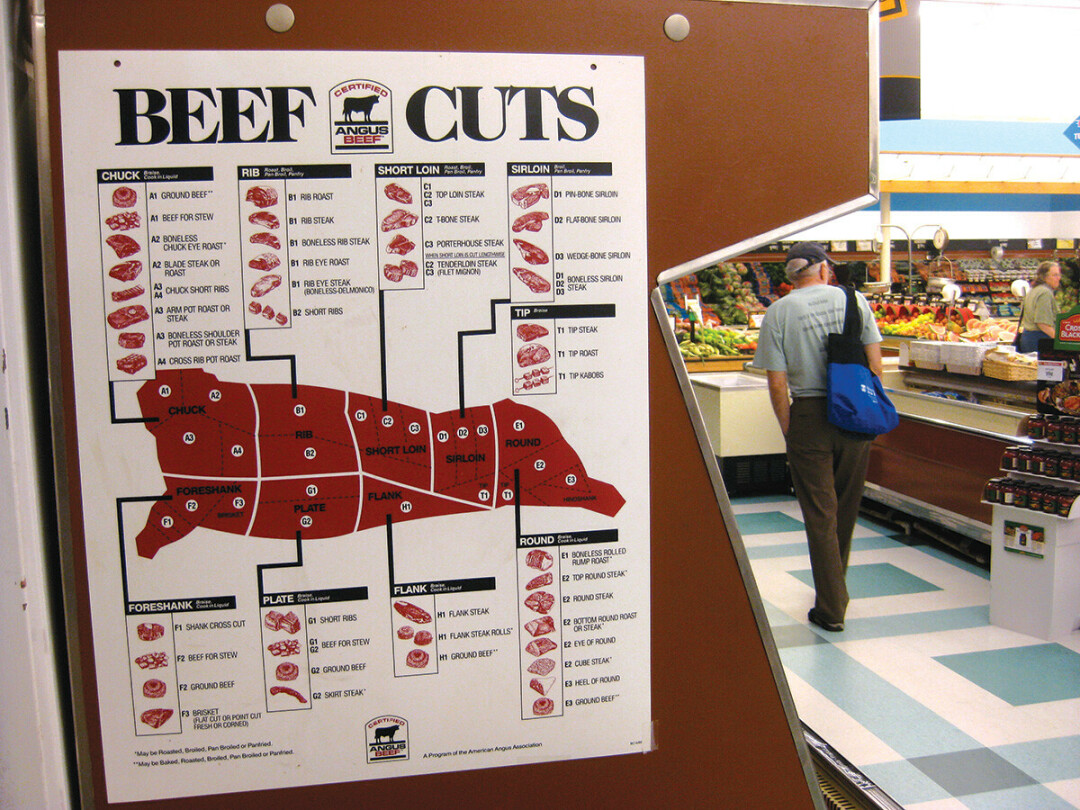A Beginner’s Guide to Buying Meat in Bulk
a whole, half, or quarter means more meat and extra savings

For a fiscally conscious family of carnivores, budgeting for protein might be a challenge. However, if you’ve got a mind for planning ahead and some freezer space to spare, buying meat in bulk can be a big money-saver.
Many farms and meat processing facilities in the Chippewa Valley offer customers the option to purchase a whole, half, or quarter cow or a whole or half pig (referred to as “beef” and “pork” during the buying process). Patrons pay a dollar amount per pound of “hanging weight,” which is the weight of the animal before aging and processing. Some butchers base the price on the weight of the animal when it’s alive, so make sure to clarify the process with your butcher. The butcher will do all the processing and packaging for you, so all you have to do is put in your order and pick up the meat when it’s ready. Depending on the season and availability, the process can take one to three weeks from order to pick-up.
One of the perks of buying beef and pork this way is that you get a lot of say in how it’s processed. Many processors allow you to choose the thickness of any steaks, and how many cuts or pounds of meat are in each package.
Something first-time buyers should be aware of is that even if their half beef weighs in at 400 pounds, they will not receive 400 pounds of meat. Processors often dry-age meat for several days, which reduces the moisture in the product and therefore the weight. During the butchering process, bones and unwanted organs are removed, further reducing the weight. Depending on a number of factors, a 400 pound half beef will yield about 250 pounds of meat.
One of the beauties of buying in bulk is that the price you pay per pound covers everything from ground beef all the way up to steaks that would cost more than $10 per pound if bought individually.
One of the perks of buying beef and pork this way is that you get a lot of say in how it’s processed. Many processors allow you to choose the thickness of any steaks, and how many cuts or pounds of meat are in each package. So if your family of four needs a pound and a half of ground beef for a meal, or a one-pound package is just too much for you and your spouse, you can adjust to avoid waste.
Once you’ve brought your bounty home, pork lasts in the freezer for 6-9 months, and beef will stay good for 9-12 months. Store meat at -10 to -15 degrees Fahrenheit and remove to thaw a day or two before you want to use it. In order to avoid spoiling the meat, avoid repetitive warming and cooling.
“Buying a quarter or a half is a lot of money up front, but the savings are well worth it,” said Randy Grossbier, owner of Spring Brook Meats in Elk Mound.
Depending on where you buy your meat from, you also benefit from a personal relationship with the butcher, who can tell you where and how the animal was raised. At the end of the process, you’ll have a freezer full of food, one less reason to go grocery shopping, and some significant savings.

